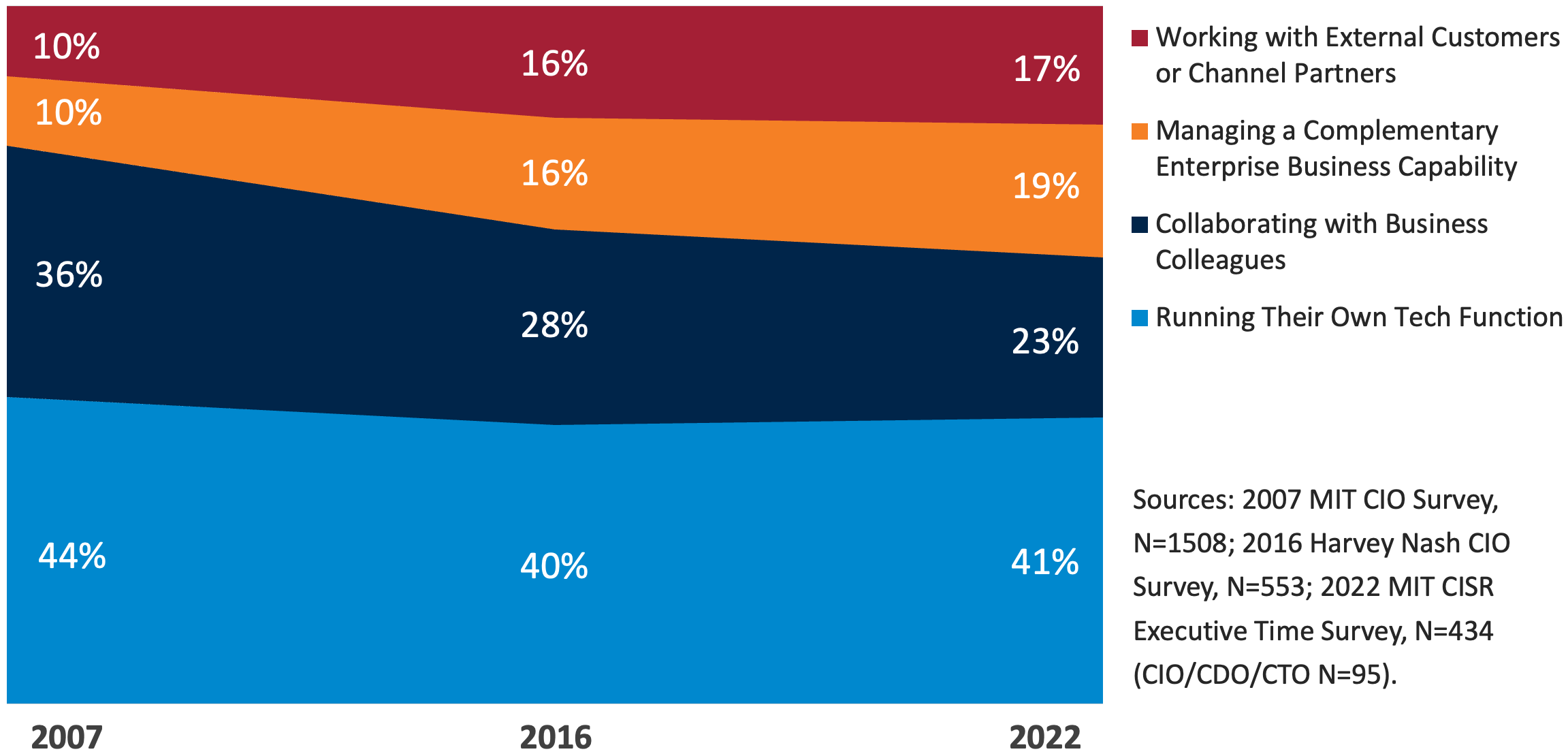The role of technology leaders is changing fast. As large established companies become increasingly digital, offering connected products and services and leading or participating in ecosystems, their tech leaders must balance many demands and opportunities for their time. And as digital technologies have become pervasive in enterprises, these demands and opportunities often fall outside the traditional CIO role.
Since 2007, MIT CISR has been researching how tech leaders spend their time and analyzing how those in top-performing companies differ from the rest. In this briefing we share how time allocations for tech leaders have changed over fifteen years and look at the time allocations of tech leaders in companies that lead their peers on success metrics. To illustrate the findings and lessons learned, Gail Evans, a technology leader at Disney Experiences, describes how she allocates her time.










